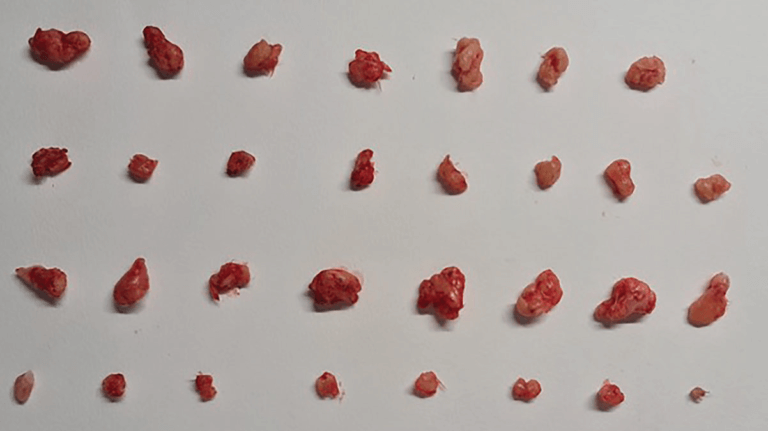The creation of double-strand breaks in the DNA of certain cancer cells may help inhibit the growth

Every day, hundreds of thousands of defects are caused in DNA, our genetic material, as a result of the metabolic activity in the cell, and due to external factors such as radiation, free radicals and exposure to various substances. Therefore, there are protein systems in the cells that scan the DNA, monitor it and repair it continuously. However, defects can also occur in proteins that are responsible for repairing DNA damage. For example, the function of the proteins that control the replication of the genetic material during cell division can be damaged, which can lead to uncontrolled cell division and thus to the development of a cancerous tumor.
One of the main and most dangerous defects in DNA is double-strand breaks. Strands are chains of nucleic acids, and each DNA molecule is a double helix of two strands. If one strand breaks, the stability of the other strand is affected and it may also break. In such a situation, if the proteins responsible for repairing DNA damage are damaged and do not function, mutations (genetic changes) may develop that will lead to diseases such as cancer. For example, the main function of the proteins produced by the BRCA1 and BRCA2 genes is to repair double-strand breaks and restore the genetic material to its original state. When these genes are damaged by a hereditary mutation and do not function, the breaks in the genetic material are not repaired, which causes the development of breast, ovarian, and other cancers.
One of the dangerous defects that can occur in the genetic lumen is a double-strand break. If one strand of the DNA is broken, the stability of the other strand is affected and it may also break. In such a situation, if the proteins responsible for repairing genetic damage are damaged and do not function, mutations may develop that lead to diseases such as cancer.
Prof. Navia Ayoub from the Faculty of Biology at the Technion and his team are investigating the connection between the repair of DNA damage, especially the double-stranded breaks, and cancer. In their latest study, which won a research grant from the National Science Foundation, the researchers scanned proteins that may be involved in the repair of genetic damage, and discovered that the 6RBM protein is also involved in the repair of double-strand breaks. Until now, the involvement of this protein in RNA splicing was known. A pathway where pre-messenger RNA molecules - which play an important role in transferring information from DNA and "translating" it into proteins - go through processing processes where they are cut. Thus, certain sections are found from them and the remaining sections are connected to each other and messenger RNA molecules are formed, which encode the information needed to build the proteins.
The researchers induced a mutation in the RBM6 gene from which the 6RBM protein is produced in human, normal and cancerous (breast tumor) cells, using a gene editing system (Crisper technology) and saw that the double-stranded breaks were not properly repaired. Later, check how the protein affects the repair and what is its mechanism of action. Using diverse molecular methods, they discovered that it controls RNA splicing of genes responsible for double-strand break repair, such as the Fe65 gene. In fact, it was found that cells with a mutation in the RBM6 gene have a very low level of the Fe65 protein, which impairs the repair of double-strand breaks in DNA.
In addition, the researchers performed RNA sequencing in breast cancer cells and discovered that many of them have a mutation in the 6RBM gene, which as mentioned impairs its protein production and function and therefore impairs its contribution to the repair of the double-strand breaks. That is, there may be a link between the dysfunction of 6RBM and the development of breast cancer.
Later, the researchers injected mice with cancer cells with the mutation in the 6RBM gene and cancer cells without the mutation - and all of them developed a tumor. Following this, they injected them with cisplatin - a chemical drug whose purpose is to create double-strand breaks in the DNA of the cancer cells - and they saw that the cells with the mutation were much more sensitive to it and underwent programmed cell death (apoptosis). That is, the mutation in the 6RBM gene damaged the ability of the cancer cells to repair the breaks that were created in them as a result of the drug, and they were destroyed. "These findings indicate that cisplatin treatment can be effective for types of cancer that include a mutation in the 6RBM gene, and we hope that its use will be expanded as a result," Prof. Ayoub concludes.
Life itself:
Prof. Navia Ayoub, married and father of three children (18, 15, 11), was born in the village of Pasuta in the Galilee and currently lives in Haifa. In his free time he likes to run and cultivate the land ("this is of course related to my background and resets me").
